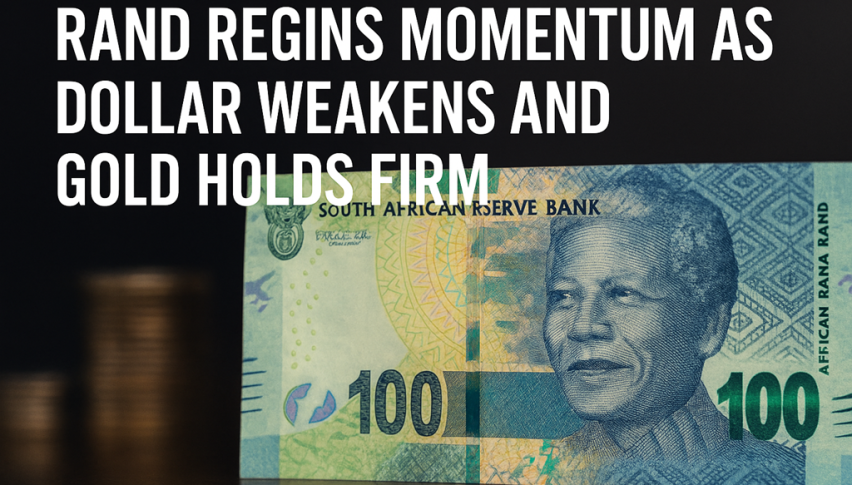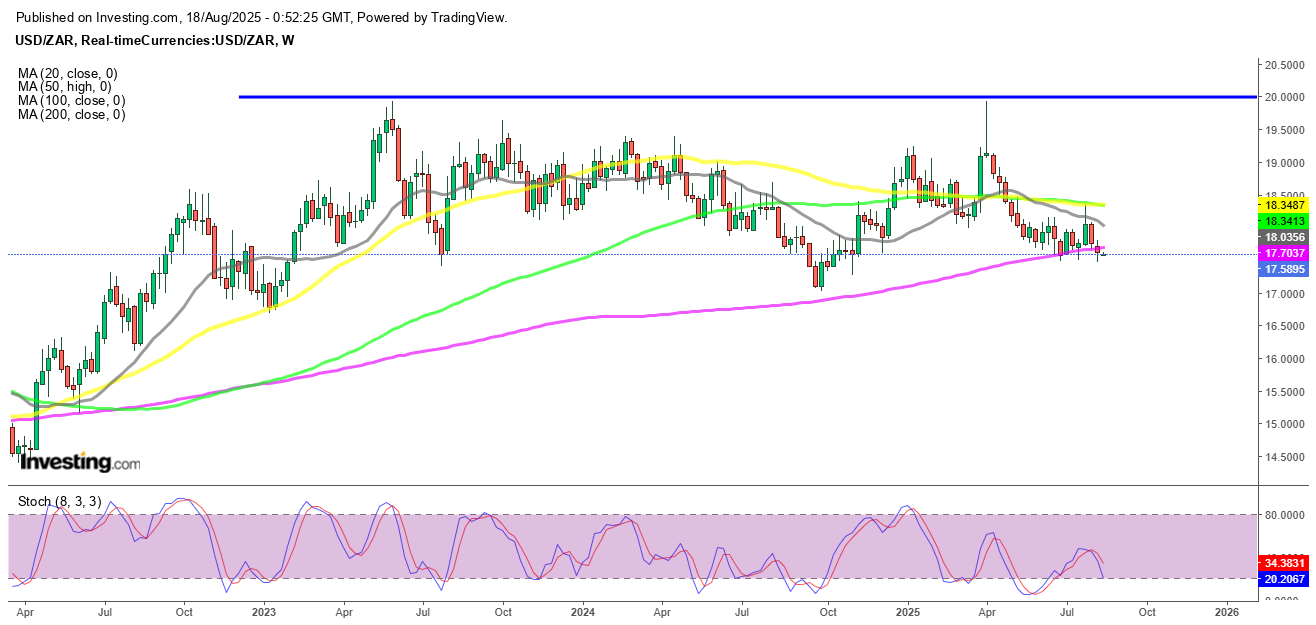South African Rand Forecast: USD/ZAR Tests R17.50, Eyes R17 After SA Inflation
The After losing momentum in July, the South African rand recovered strongly in early August thanks to rising gold prices, a weaker dollar..

Quick overview
- The South African rand recovered in early August due to resilient gold prices and a weaker U.S. dollar after a challenging July.
- The USD/ZAR exchange rate approached the R17.50 support zone, with analysts predicting a potential drop to R17.
- Technical indicators show strong selling pressure, suggesting a bearish outlook for the rand in the short term.
- Upcoming inflation data from South Africa will be crucial in determining the future trajectory of the rand and interest rates.
After losing momentum in July, the South African rand recovered strongly in early August thanks to rising gold prices, a weaker dollar, and changing investor attitude.
Rand’s Recovery and Key Levels
The USD/ZAR exchange rate fell back toward the R17.50 support zone in early August, retracing much of its July losses. At one point, the pair slipped to its lowest levels since November 2024 before stabilizing above R17.50 by the week’s close. Although the level initially held, analysts see room for a further drop, with the next target near R17, as recent price action suggests that R17.50 is unlikely to provide lasting support.
Technical Signals and Market Sentiment
The technical backdrop suggests that sellers remain firmly in control. In late July, USD/ZAR briefly soared above R18, holding that level for the first time since May. However, the 200-day simple moving average (SMA) was breached last week, undermining the strength of the R17.50 support zone. The swift reversal lower in early August confirmed strong selling pressure, pointing to a bearish tone in the short term.
USD/ZAR Chart Monthly – The 20 SMA Acted As Resistance
South Africa’s Inflation Climbs to 10-Month High in July
South Africa’s consumer price inflation rose to 3.5% year-on-year in July, marking its highest level since September 2024. The increase was largely driven by higher food and fuel costs, which continue to pressure household budgets and add strain to the broader economy. Despite the uptick, inflation remained within the South African Reserve Bank’s (SARB) target range of 3% to 6% and matched the median forecast of analysts surveyed by Reuters, suggesting that markets had anticipated the move.
SARB Governor Lesetja Kganyago has repeatedly argued that the current inflation target band is too wide and undermines the competitiveness of Africa’s largest economy. He has advocated for narrowing the target range to create a more disciplined framework for price stability and long-term growth. While July’s data reinforces the importance of stable inflation, it also highlights the delicate balance facing policymakers: controlling inflation without stifling growth in an economy already grappling with slow recovery, structural weaknesses, and external pressures.
Dollar Weakness and Gold’s Supportive Role
The rand’s rebound has been fueled by two key external forces: weaker U.S. dollar momentum and higher gold prices. The greenback lost ground last week after softer U.S. inflation data raised market confidence in a September Fed rate cut, followed by the possibility of two more reductions in 2025. Gold, one of South Africa’s most critical exports, continued to trade at elevated levels despite brief consolidation, further strengthening the appeal of the rand.
At the same time, investor caution over U.S. tariffs and wider geopolitical uncertainty added to demand for emerging market currencies like the ZAR, reinforcing the downtrend in USD/ZAR.
USD/ZAR Chart Weekly – The 200 SMA Is Now Broken
Domestic Outlook: Inflation in Focus
Attention now shifts to South Africa’s inflation release on Wednesday, which will be critical for gauging the country’s monetary outlook. Inflation has remained at the lower end of the 3%–6% target range for nine consecutive months, prompting expectations for continued easing. The South African Reserve Bank is already anticipated to deliver a cumulative 75 basis point cut in 2025, with additional reductions possible if inflation remains subdued.
Conclusion: The rand’s recent strength is a product of both global and domestic drivers: a weaker U.S. dollar, supportive gold prices, and investor bets on Fed easing. While the currency has regained ground quickly, technical signals suggest further downside in USD/ZAR, with the pair likely to test the R17 level in the coming sessions. This week’s inflation report will be a decisive factor, shaping expectations for South Africa’s interest rate path and the rand’s longer-term trajectory.
- Check out our free forex signals
- Follow the top economic events on FX Leaders economic calendar
- Trade better, discover more Forex Trading Strategies
- Open a FREE Trading Account




